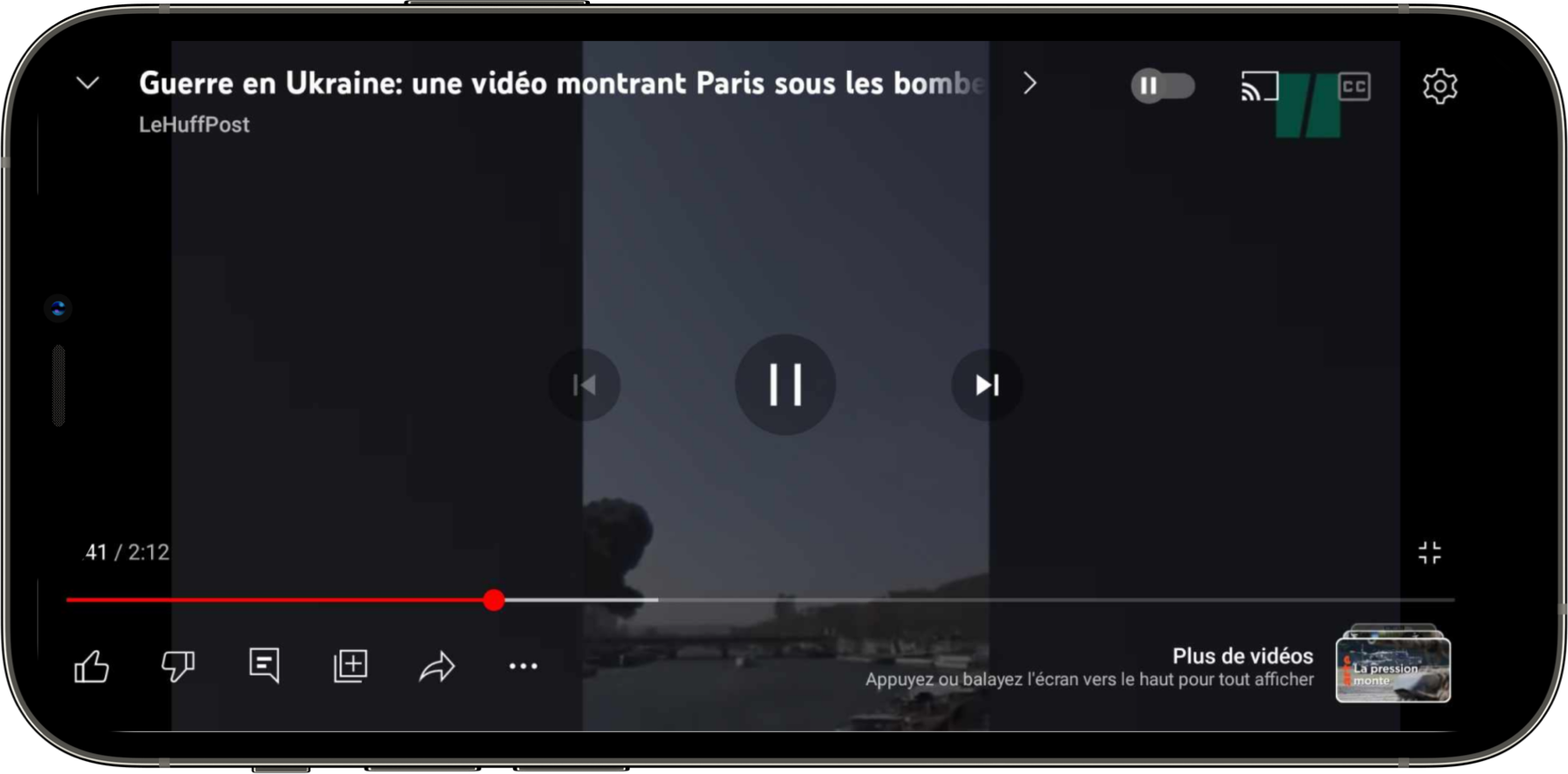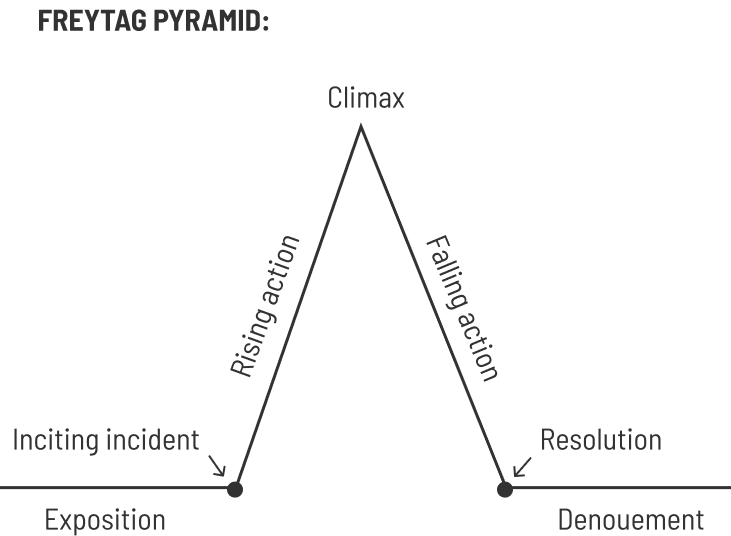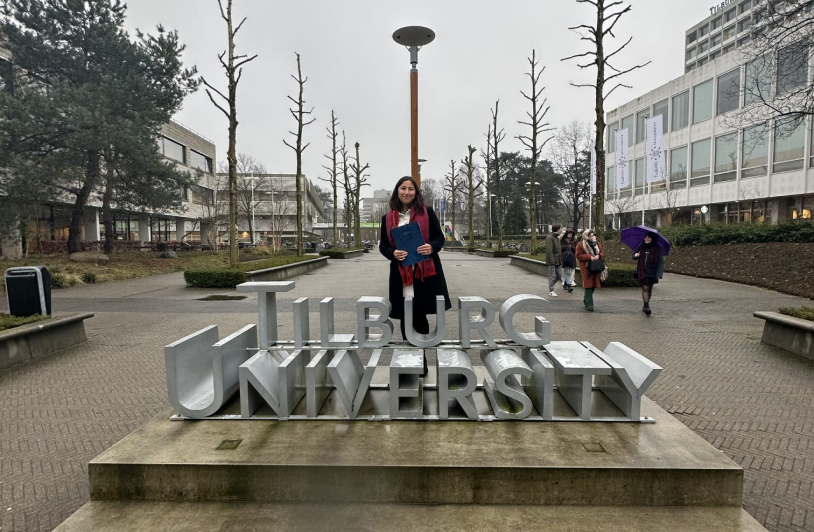03 Positive Discomfort:
Could deepfakes create parapathic emotions?
There is a general understanding that humans avoid natural discomfort when possible. However, people remain attracted to thrill and challenges even though discomfort. As intense and distressing as it may be, discomfort seems to be gratifying because it provides unique experiences, reflection, and social bonding [1, 2, 3]. According to Benford et al. [1], there are 4 types of discomfort: visceral, cultural, control, and intimacy. Manipulating discomfort could be rewarding and valuable. Nevertheless, to benefit from it, people should manage it responsibly and ethically. The following article will explore how the shocking nature of deepfake videos could also cause parapathic emotions, which could lead to the feeling of positive discomfort. A study has also been conducted to measure changes over time in positive discomfort after reflecting on a deepfake in the news.
Student Project (solo)
UX Design Class
Data and Misinformation Class
MSc New Media Design
at Tilburg University
2x 1 months (2022)
UX Research

Upsetting emotions such as suspense, fear, anxiety, and guilt, or physical responses such as movement, exertion, and pain, all can be subject to discomfort. Sociologist Jack Mezirow [4] theorized that humans tend to minimize and avoid that sort of discomfort. However, people are still seen engaging in uncomfortable experiences like watching horror movies or riding a rollercoaster. Human psychology sees intensity and distress, yet somehow the brain interprets these feelings as a positive sense of discomfort because it provides unique, challenging, and memorable experiences. This enjoyable form of negative emotion is called parapathic emotion [5]. Stenros [6] explains that parapathic emotions are: “strong negative emotions that are enjoyable and exciting but demand a feeling of safety in order to remain enjoyable” (p. 134). According to Donald Norman’s model of user experience [7], in the instance of the roller coaster experience, there are visceral processing and reflective processing: “The visceral system is operating at full force, while the reflective system is a calming influence. [...] During the rollercoaster, the visceral system wins, but in retrospect, when memory has dimmed, the reflective system wins” (p. 89). In certain situations, positive discomfort is seen as rewarding and valuable because it creates new insights, questions fundamental values, and enables awareness by provoking reflection [1, 2, 3]. In addition to reflection, the deliberate use of positive discomfort could also lead to entertainment and social bonding [1].
Benford et al. [1] explained that discomfort can take multiple forms. There is visceral discomfort, with unpleasant wearables, unfamiliar physical activity, or pain; cultural discomfort, when people confront challenging themes, make difficult decisions, or observe chilling associations; control discomfort, when people surrender to machines, to others, or take control of others; and finally, intimacy discomfort, with isolation, intimacy with strangers or undesired surveillance and voyeurism.
Research agrees that discomfort must be managed carefully and ethically in order to create intense experiences [1, 3]. Furthermore, for an experience to remain attractive, discomfort needs to be “maintained unbroken but at the same time needs to be challenged and put at risk” [8, p. 6]. Gustav Freytag [9] created a five-step structure to control the manipulation of discomfort. He explained that uncomfortable interactions should be exposed in this order: exposition (framing expectation), rising action (building suspense), climax (experiencing), falling action (releasing), and dénouement (assimilating) [1].

Deepfakes are badly connotated. It is because until now they have been used for malicious purposes [10] such as cyberbullying, market manipulation, identity theft, and more. Deepfakes can manipulate viewers’ opinions and lead them to acquire false beliefs. Unquestionably, it poses a large threat. In any case, there is the problem of the initial discomfort. Deepfakes induce cultural and/or control discomfort [1]. When watching a deepfake, people can be confronted with challenging themes, with difficult moral decisions, or they may invoke chilling associations with their memory. They could also have to surrender to others and/or to a machine. They could experience a loss of control over the reality they believe to be true. The question now is to know the limit of the uneasiness and to see how much the parapathic emotions can compensate for the initial discomfort. The prospect of applying deepfake as a positive discomfort could be considered.
By transforming harmful discomfort into positive discomfort, we could maybe use deepfakes to entertain, induce motivated reasoning, enlighten a subject, or create empathy. These unique, challenging, and memorable experiences could be gratifying because they could motivate reflection. Deepfakes also open the door to a series of interesting applications in different fields such as entertainment, healthcare, or fashion. Research [11, 12] shows that deepfakes could be used in movies, as a type of visual effect, in video games, with your face on your avatar for a more immersive experience, in surgery, with transgender people, amputees, women with breast cancer, or to treat Alzheimer, or in e-commerce, by changing the appearance of a model. These are just a few summarized examples of potential uses that are not deceitful.
There was a cheapfake video shared on March 12th, 2022, by Ukraine to ask for NATO’s help [13]. This video was used as a strategy to provoke reflection and generate a change in attitude toward the war between Russia and Ukraine. It presents Paris under attack, with the air force flying over the city, with bombing inside the city, and the population panicking. As a final message, Ukraine asks to close the sky or to give them fighters. It has been shared on Ukraine’s minister of defense’s Twitter account, on Ukraine’s deputy prime minister's account on Telegram, and in UkraineNOW, the country’s primary verified source of official information.
Even if the video can be perceived as uncomfortable and distressing, I believe Ukraine counted on the fact that it is a unique and memorable experience that could make the viewers have empathy and ponder. The deception was revealed at the end, ensuring a safe environment for parapathic emotions and a possible reflection. Because the experience provided uneasiness as well as new insights, it could have been seen as rewarding and valuable. If there is indeed a reflection, the initial discomfort might also trigger positive discomfort through reflection, ultimately generating a change in attitude. However, it is morally acceptable for Ukraine to use such a strategy? Do you think if cheapfakes and deepfakes are perceivable and used in a safe environment, is it more morally acceptable to use them?
#ifwefallyoufall ❗️@NATO close the sky over Ukraine! pic.twitter.com/kRWIQlU9Pn
— Defense of Ukraine (@DefenceU) March 12, 2022
Student Project (in group)
UX Design Class
MSc New Media Design
at Tilburg University
2 months (2022)
UX Research
In this study, fundamental research was the aim. The subject is relatively new to the scientific field and authors have different views on positive discomfort. It was, for example, called an uncomfortable user experience for its use in communication research [1], while it was also referred to as discomforting pedagogies for educational research [14]. In addition, there is no well-known measurement to quantify or qualify positive discomfort. A deeper investigation could help conceptualize the notion of positive discomfort to create a model and a measurement for generalized use.
Therefore, the following research question was formulated: “Do synthetic media such as deepfakes used in the news affect positive discomfort?” It was hypothesized that “deepfakes in the news have an effect on people's feelings of positive discomfort” (H1). Besides, it was also hypothesized that ”there is a correlation between attitude and discomfort subsequent to the reflection” (H2).
The stimuli of this study consisted of a deepfake video, showing Mark Rutte, the prime minister of The Netherlands addressing the climate crisis in 2021 [15]. The statements in the video regarding this issue contradict the actual opinion of the prime minister. The video was deepfake, meaning the setting of the video was real, but the voice of the prime minister in the video had been changed so that the words spoken were not accurate and had never been said by the prime minister. In the actual speech, the prime minister talked about the country's policy regarding Covid-19 regulations.
A within-subjects pretest-posttest experiment was conducted with 35 participants to measure changes over time in positive discomfort before and after the deception was revealed. The deepfake video being the independent variable, this study examined whether the reveal affected positively the discomfort in the context of news and if a period of reflection created a greater feeling of positive discomfort.
In this study, different measurements were combined to quantify positive discomfort: discomfort and participants’ attitude toward the experience. While participants’ attitudes were measured through a hedonic attitude scale, the discomfort was analyzed by measuring cognitive dissonance. Cognitive dissonance-based discomfort occurs when beliefs or attitudes contradict each other [16]. Since the deepfake video contradicts the actual views of Mark Rutte, this could lead to dissonance-based discomfort in participants.
Contrary to what was expected, no significant effect was found between the pre-test and post-test, and it is assumed that deepfakes in the news do not have an effect on people's feelings of positive discomfort. Therefore, both H1 and H2 were rejected.
These results might be due to several limitations that this experiment encountered, such as the jeopardy of the criterion validity, the inter-item reliability of the new measurement, and internal validity. Moreover, feedback from participants during reflection showed that many knew something was wrong with the video. Positive discomfort might be more present by recreating the experiment with more credible stimuli.
At present, I believe the subject has not been researched enough and it was hard to create a new measurement for a relatively new concept. However, even if the study does not show significant findings, many things have been learned about positive discomfort and deepfakes. It provided insight to create a future model, framework, or measurement for positive discomfort. Regarding deepfakes, this study brings a new light to its role as a medium to convey messages, encourage reflection, and change attitudes. As deepfakes will appear more and more in our lives, and positive discomfort is a potential benefit for people, future fundamental research could improve our experiment and maybe find more significant findings that would tell us more about society. Nonetheless, I believe that deepfake should be used with care since we do not know exactly if it would provide positive outcomes.
If you are more interested in the research, I invite you to message me to read the entire scientific article, which describes in more details the results of our study.

[1] Verdoliva, L. (2020). Media Forensics and DeepFakes: An Overview. IEEE Journal of Selected Topics in Signal Processing, 14(5), 910–932.
[2] Halbert, H., & Nathan, L. P. (2015, February). Designing for Discomfort: Supporting Critical Reflection Through Interactive Tools. In Proceedings of the 18th ACM Conference on Computer Supported Cooperative Work & Social Computing (pp. 349-360). https://doi.org/10.1145/2675133.2675162
[3] Jørgensen, K. (2016). The Positive Discomfort of Spec ops: The Line. Game studies, 16(2), unpaginated. http://gamestudies.org/1602/articles/jorgensenkristine
[4] Mezirow, J. (1990). Fostering critical reflection in adulthood: A guide to transformative and emancipatory learning (pp. 1-20). San Francisco: Jossey-Bass Publishers.
[5] Apter, M. J. (1992). The dangerous edge: The psychology of excitement. Free Press.
[6] Stenros, J. (2015). Playfulness, Play and Games. A Constructionist Ludology Approach. PhD thesis, University of Tampere. Retrieved on November 16, 2016: https://tampub.uta.fi/handle/10024/96986
[7] Norman, D. (2013). The Design of Everyday Things. Adfo Books.
[8] Linderoth, J. & Mortensen, T.E. (2015). Dark Play: The Aesthetics of Controversial Playfulness. In T.E. Mortensen, J. Linderoth, & A.M.L. Brown (Eds.), The Dark Side of Game Play. Controversial Issues in Playful Environments (pp. 3--14). New York, London: Routledge.
[9] Freytag, G. (1863). Die technik des dramas. Verlag von S. Hirzel. Leipzig, Germany.
[10] Langguth J., Pogorelov, K., Brenner, S., Filkuková, P., & Schroeder, D.T. (2021). Don't Trust Your Eyes: Image Manipulation in the Age of DeepFakes. Frontiers in Communication, 6, 632317.
[11] Westerlund, M. (2019). The Emergence of Deepfake Technology: A Review. Technology Innovation Management Review, 9(11), 39–52. https://doi.org/10.22215/timreview/1282
[12] Verdoliva, L. (2020). Media Forensics and DeepFakes: An Overview. IEEE Journal of Selected Topics in Signal Processing, 14(5), 910–932.
[13] Defense of Ukraine [@DefenceU]. (2022, March 12). #ifwefallyoufall ! @NATO close the sky over Ukraine! [Video attached] [Tweet]. Twitter. https://twitter.com/DefenceU/status/1502526143806726145?s=20&t=Kv1VAvK5zcSi7ZgM_sJqMw
[14] Zembylas, M., & McGlynn, C. (2012). Discomforting Pedagogies: Emotional Tensions, Ethical Dilemmas, and Transformative Possibilities. British Educational Research Journal, 38(1), 41–59. https://doi.org/10.1080/01411926.2010.523779
[15] De Correspondent. (2021, October 28). Beste Mark Rutte, zo klink je als je #klimaatleiderschap toont [Video]. YouTube. https://www.youtube.com/watch?v=a95O4JsMBHQ
[16] Festinger, L. (1957). A Theory of Cognitive Dissonance. Stanford University Press.
Special thanks to my classmates with whom I completed the later research: Emma Koow, Debbie Schoone, and Heleen Van der Tuuk